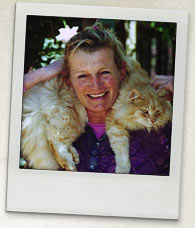Alison Lester interview
Teaching notes



How to use the Alison Lester interview
Alison Lester’s interview and masterclass are components of ‘Alison Lester talks’, which is part of the larger resource, Writers talk. Both components aim to stimulate students to read, write and respond to literature.
The interview – consisting of five video clips – along with Lester’s books, can be used to support students working towards achieving outcomes in the Stages 1, 2 and 3 English and Creative Arts syllabuses and Stages 1 and 2 of the Human Society and Its Environment syllabus from the NESA. While many of the books are suitable for Stage 1 students, the ideas presented in the video are most appropriate for Stages 2 and 3. The syllabuses can be found at:
English
Stage 1
Through the interview, learning activities and study of Lester’s books, students have the opportunity to:
- read and respond to texts representing real or imagined experiences (RS1.5, TS1.1)
- identify the purpose of illustrations in texts (RS1.7)
- discuss illustrations and how they contribute to understanding and enjoyment of texts (RS1.7)
- write and illustrate for a chosen purpose and audience (WS1.9, WS1.13).
Stage 2
Through the interview, learning activities and study of Lester’s books, students have the opportunity to:
- read and discuss their interpretation of ideas presented in illustrated texts (RS2.5, TS2.1)
- talk about how writers achieve their purpose using text and illustrations (RS2.7)
- develop an understanding of the structure of texts (RS2.8)
- write and illustrate for a chosen purpose and audience (WS2.9, WS2.13).
Stage 3
Through the interview, learning activities and study of Lester’s books, students have the opportunity to:
- recognise and discuss techniques used by writers to achieve their purpose (RS3.5, TS3.1)
- express and justify opinions on the role of illustrations in books (RS3.7)
- analyse ways in which writers structure illustrations and text to engage their audience (RS3.8)
- write and illustrate for a chosen purpose and audience (WS3.9, WS3.13).
Creative Arts
Stage 1
Through the interview and study of Lester’s books, students have the opportunity to:
- investigate and make visual representation of places and spaces both imagined and real (VAS1.1)
- talk and write about the illustrations that Lester presents in her picture books and discuss the role of the illustrator (VAS1.3)
- take on the roles of characters from literature (DRAS1.1)
- interpret and adapt stories to present through movement and voice (DRAS1.2).
Stage 2
Through the interview and study of Lester’s books, students have the opportunity to:
- consider their intentions for making illustrations for their own books (VAS2.1)
- discuss Lester’s reason for making artworks and her role as author/illustrator (VAS2.3)
- take on and sustain the roles of story characters in imagined situations using various drama forms, such as puppetry, playbuilding and mime (DRAS2.1).
Stage 3
Through the interview and study of Lester’s books, students have the opportunity to:
- explore subject matter in relation to their own texts (VAS3.1)
- identify the audience for their own texts and develop illustrations for these with an audience in mind (VAS3.2)
- discuss artworks in the texts and realise that audience members have different opinions about artworks (VAS3.3)
- use texts to develop narratives and build dramatic action (DRAS3.2)
- use literary texts as resources for drama performances (DRAS3.3).
Human Society and Its Environment
Lester’s book Are We There Yet? A journey around Australia is particularly relevant to the HSIE key learning area.
Stage 1
Through the interview and study of Are We There Yet? A journey around Australia, students have the opportunity to develop an awareness of:
- different Australian environments, both natural and built (ENS1.5)
- the significance and relationships of Australian Aboriginal peoples to the land (ENS1.6).
Stage 2
Through the interview and study of Are We There Yet? A journey around Australia, students have the opportunity to develop an awareness of:
- some significant natural, heritage and built features in Australia (ENS2.5)
- the associations that Australian Aboriginal peoples and other groups have with particular places and features of Australia (ENS2.6).
Quality teaching
Alison Lester’s interview, along with study of the texts written by the featured author, can be used to address the elements of Quality teaching in NSW public schools.
The interview, related classroom discussion and learning activities enable students to:
- explore the features of stories and concepts developed by current writers whose work is acknowledged for its significance (Higher-order thinking)
- experience specialist expertise (the authors) and develop an understanding of the role of the author and of the concepts and ideas that inform and motivate the writing of stories (Deep knowledge)
- learn to use the metalanguage of literary criticism and language use (Metalanguage)
- learn that knowledge is socially constructed with multiple layers and personal interpretations (Problematic knowledge)
- build upon prior knowledge, such as knowledge of the featured author/illustrators and their books (Background knowledge)
- make meaningful connections between subject areas and address outcomes across key learning areas (Knowledge integration)
- recognise and explore connections between their own lives and both the subject matter and creative processes employed by the authors. This might include seeking out other books by the featured authors, or books on similar topics, and sharing their own writing with audiences beyond the school arena (Connectedness)
- use narratives, such as the author interviews, as a way of developing creative processes (Narrative).